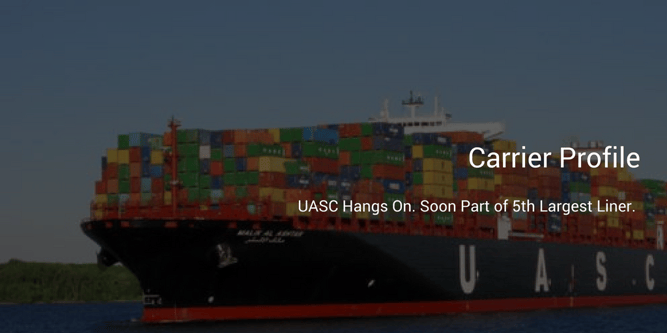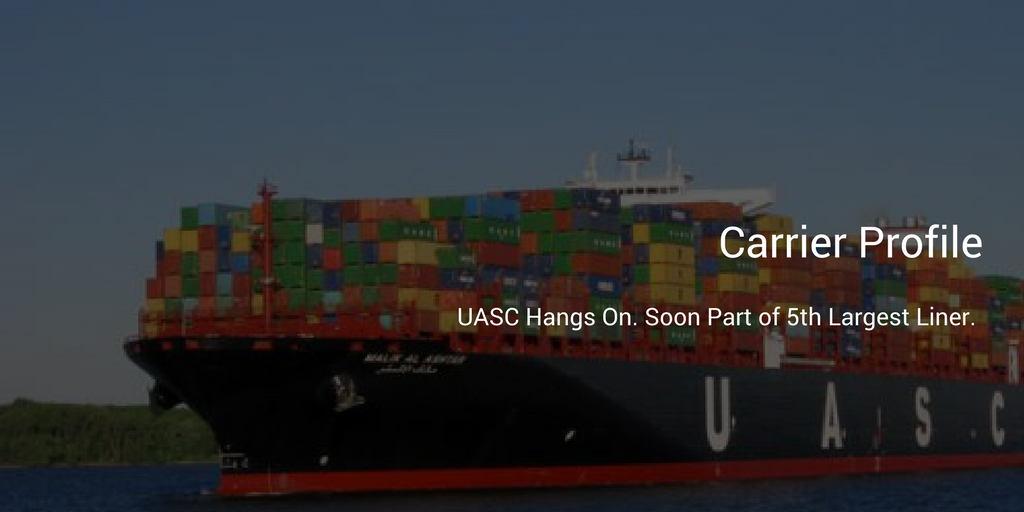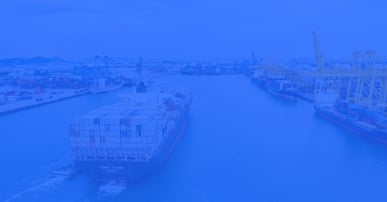
IMAGE: www.uasc.net
Headquartered in Dubai, United Arab Shipping Company (UASC) has one of the youngest container fleets currently in the ocean freight market as well as one of the largest in the Middle East. Founded in 1976 jointly by six shareholding Arab states of the Persian Gulf (Bahrain, Iraq, Kuwait, Qatar, Saudi Arabia and UAE), the company has almost 200 offices around the world and covers approximately 240 ports and destinations worldwide.
UASC Financials
What little of United Arab Shipping Company’s financials that have been made public is certainly not very promising; similar to many other ocean freight carriers for that matter. During the first six months of 2016, the company posted an operating loss of USD $132 million and net loss of USD $201 million on revenues of USD $1.5 billion in the first six months of 2016.
In 2015, the company had a net loss of $384.3 million in 2015, while the ocean carrier's earnings before interest and taxes (EBIT) were a loss of $298.7 million.
The not so stellar financials prompted Alphaliner to note that a negative operating margin of -9% makes UASC “the worst performer among all main container carriers that have published financial results for 2015.”
Hapag Lloyd to Rescue
The ocean freight market may not have known about the UASC’s financials if it had not been for the agreement with Hapag-Lloyd to merge. Hapag-Lloyd made the financials public in its annual meeting of Hapag-Lloyd shareholders. Although, in December 2016 there were some delays with the merger reported due to "financing issues blamed on a deep industry downturn" as reported by Reuters. Let's see how long the process ends up taking.
The deal with United Arab Shipping Company has created a group with an estimated value approximately valued at USD $7.7-$8.9 billion. Prior to the merger, Hapag-Lloyd placed itself fifth globally in terms of carrier capacity, and UASC in eleventh place. Combined, the two companies will move closer to the fourth largest carrier, COSCO. In addition, the combined entity will have a global market share of approximately 7%.
The merger will give Hapag-Lloyd access to bigger ships on the Asia to Europe trade route. For UASC, it will gain wider access to trans-Atlantic and trans-Pacific loops, where Hapag-Lloyd is strong.
After the deal is completed, existing Hapag-Lloyd shareholders will own 72.2%of the new company and the six Middle East governments (Bahrain, Iraq, Kuwait Qatar, Saudi Arabia, UAE) that own UASC will own 27.8% of the merged company.
5th Largest Carrier Good Enough?
The benefits of the combined UASC and Hapag-Lloyd marriage are great. However, will being the fifth largest container carrier be enough to weather the stormy ocean freight market? UASC and hence the new combined company does and will have access to deep pockets to tap into thanks to the financial stake of the Middle East governments. In addition, despite being described as a “grouping of the weak” the start of the new alliance, The Alliance, is scheduled to begin operations in April 2017 and should benefit UASC with access to additional trade lanes.
Stay Ahead of the Ocean Freight Market
The ocean freight market remains tough for all players involved. Will this latest merger be impactful in the turbulent market? We shall see. Make sure you know where you stand in comparison to current container market prices. Learn how to stay ahead of the market.
Download our webinar and learn more.
Why You Should Watch the Webinar
- You need to know how the ocean freight market prices are moving as you prepare for your RFQ
- You need real-time data to benchmark your container prices for the spot and long-term ocean freight market
- You need container pricing data to help you negotiate better with your shipping suppliers and be convincing in your discussions






